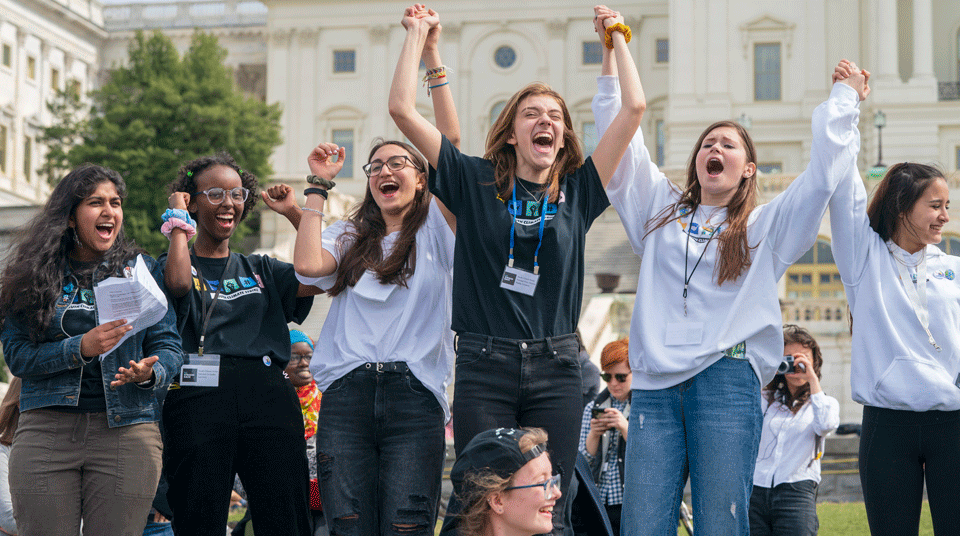
A New Deal saved the country in the 1930s. A Green New Deal is needed to save it again. Introduced into Congress by Rep. Alexandra Ocasio-Cortez, D-N.Y., the proposed stimulus program is rapidly gaining support, even as Trump and Republicans deride and oppose it. Marc Brodine, an environmentalist who recently wrote a book on these issues titled Green Strategy, sat down with People’s World for an interview on the steps involved to make the Green New Deal a reality, and how building a united movement is intrinsically linked to making that happen.
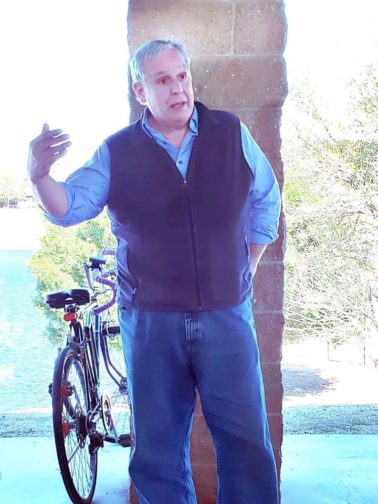
The name Green New Deal takes its name from the New Deal instituted by Franklin D. Roosevelt to dig the U.S. out of the Great Depression. It involved instituting a minimum wage, Social Security, unemployment insurance, the right to form a union, and an enormous public works program that built thousands of the bridges and highway still used in this country today. Like its predecessor, the Green New Deal will need to be massive and all-inclusive in scope.
So perhaps the best place to begin is in looking at what the Green New Deal requires. “The most important thing about it,” said Brodine, “is the way it’s being constructed; it’s based on an understanding that the real need is not simply for a detailed plan. The real need is to build a movement. It can’t be passed or implemented with actual bills unless it has a powerful enough movement behind it.”
What it is doing, he explained, is changing the national conversation—one of the steps necessary to mobilize a force capable of fighting everything from the fossil fuel industry to climate change denialism. “That mass action would be the guarantee that the process will continue,” he said. “That’s the essential element.”
This begs the question: What’s in a movement? Literally. The answer might be surprising for some.
A movement composed of movements
As it happens, the colossal movement needed to effect change should be composed of everyone—and their respective movements, as well. This includes the environmental and labor movements, Brodine noted. “Building alliances with other progressive organizations is also required,” he added. “But you also can’t expect them to drop the things they’re fighting for: social justice, health care . . . a whole range of important issues. The environmental movement has to make workers’ and activists’ issues part of what it does, too.”
Of course, there are conflicts. Though there are organizations like the BlueGreen Alliance, disagreements between some labor and environmental activists persist. It can be difficult for working-class Oklahomans with oil jobs or West Virginians employed by the coal industry to see the personal benefits of standing behind the environmental movement. How does one go about rectifying that?
“It starts with the effort to have both sides listen to one another,” said Brodine. The coal industry, of course, is no friend to workers, as miners with black lung disease can attest. “Coal companies have not only funded climate denialism, but they’ve also sought to win over workers and communities dependent upon coal by getting them to believe the coal industry has their best interests at heart when that’s clearly not true. We have to split the coal companies from those communities that depend on fossil fuel jobs. And then we have to replace those jobs—but that’s only part of it. It involves job retraining, extended unemployment insurance, and winning those workers over by making them understand that the environmental movement is not their enemy.”
This kind of communication is already happening. Rep. Ocasio-Cortez recently accepted an invitation to tour a coal mine and meet and speak with voters in Kentucky mining communities. The state’s GOP Rep. Andy Barr “thought he was issuing an impertinent challenge to Ocasio-Cortez when he asked her to meet people in coal communities and discuss the Green New Deal,” said Brodine. “But she is already making plans to go and talk with them about how to guarantee their future. The problem with the capitalist system is that it offers many workers only bad choices”—the coal industry being an example—“and our job as a progressive movement is to give people real choices, ones that guarantee their survival now and that of their children in the future.”
Educating for survival
“Survival,” as Brodine uses the word, is not hyperbole. The most recent report by the UN Panel on Climate Change warned that we have 12 years to avert unthinkable climate disaster, but for working-class people caught in the crosshairs of natural disasters, 12 years may be more time than they have. As hurricanes devastate the U.S. from New York to Louisiana, as wildfires rip through the Southwest, as tornadoes and erratic weather patterns worsen, it all can seem insurmountable. The impetus to put the Green New Deal into action seems that much more critical.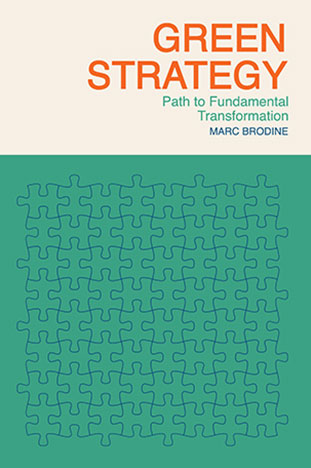
“One of the key allies in the fight to pass the Green New Deal is reality,” Brodine explained. “Reality tells us that worsening storms, volatility of weather, problems with water, soil degradation, wildfires, they’ve already done damage, so reality is a powerful teacher and ally. If all the commitments to the Paris Climate Accords were met, that would still not stop our runaway train to climate catastrophe. The steps the Accords are taking are positive, but they don’t want us to question the system that’s causing the problem in the first place, and that is capitalism.
“So part of the movement building will be educating people because environmental challenges lead us into the heart of the capitalist system, a system that is making decisions on the behalf of the One Percent. Some people like Al Gore have done a tremendous job helping to educate the public about the dangers of climate change, but they only want us to take that so far, and not to challenge the system itself. So we have to inform people about a system that relies on infinite economic growth—in a finite physical world. People have to know that when a corporation makes more money by dumping its waste into our collective atmosphere, capitalism is built to take advantage of that. Issues like that are not bugs in the system, they are features of the system.”
The counterweight to what Trump is doing
Those “features” have been well represented by Trump, who “is doing his worst by not only withdrawing from the Paris Climate Accords but also eviscerating the EPA, slashing regulations, and defunding the ability of agents to implement environmental laws and protections,” said Brodine.
“But there are already powerful forces in motion against that. Cities and states have already pledged to commit to the Paris Climate Accords even as Trump moves in the opposite direction. And this is not just one small city here or there—I’m talking major cities and states that include tens of millions of people pledging to work and take steps to decarbonize the economy. Wind power, for example, is one of the fastest growing industries. Technology is moving in a progressive direction. In the last 20 years, there have been revolutions in the efficiency of wind turbines and solar cells, while the cost has fallen dramatically.
“Combine that with a political pushback from city and state governments, and this together could provide a positive counterweight to what the Trump administration is doing. And if those are combined with a mass movement, that can provide the impetus to overcome the inertia and active resistance of the current political and economic system.”
While on the subject of Trump and the right wing, one also can’t avoid the GOP-shaped elephant in the room: climate change denial. It’s serious business, and much more than just the president sending a tweet that global warming was a hoax invented by the Chinese. Koch Industries has spent over $127 million to finance groups that have been attacking climate science and policy solutions and spreading disinformation online. It gets even worse than that, up to and including deep-pocketed friends of Trump pumping money into right-wing think tanks like the CO2 Coalition, which argues that Earth benefits from humans putting carbon dioxide in the atmosphere. Yes, really.
“It’s important to win over people who are being confused by that,” Brodine urged. “The fossil fuel industry knew that what they were doing was based on harming the future of the world, dating back to the lawsuits against ExxonMobil decades ago. The way they keep making massive profits is to spread confusion. You fight that with a movement, education, exposés that show what they’re trying to do and how it conflicts with the reality we’re all experiencing. It’s not that they’re going to convince everyone that science is wrong, but they can delay steps that will get in the way of their short-term profits and their continuation of exploiting natural resources.
“So this is about fighting those efforts, fighting attacks on science, fighting efforts to defund research. And when it comes to how climate denialism spreads its disinformation, part of that battle takes place on social media, on television, in newspapers, and in mainstream discourse about legislation in Congress. It can also come down to national priorities and people seeing environmental challenges in their communities that have to be dealt with, and taking steps to address them.”
Catalyst for environmental change
All this time we’ve been talking about movements. But it’s clear from this conversation with Marc Brodine that these “movements” are present-tense because it’s already happening. The catalyst for environmental change, the human force that will give the Green New Deal teeth, is already here.
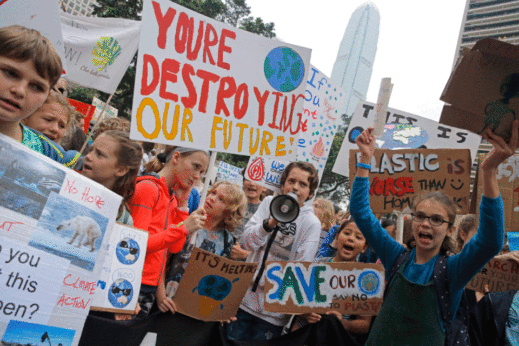
“The student movement for climate action started by Greta Thunberg is sweeping the world,” said Brodine. “Hundreds of thousands, maybe millions, of teenagers are taking action on their own behalf, creating a powerful new force that is being added to the struggle, and it’s that kind of activism that is the most important thing.”
Because, he says, it’s not just about an individual taking action, it must be everyone together.
“Some people want us to focus only on our individual carbon footprints, but that won’t create fundamental change—and that is what is demanded of us because the end result of climate change will be terrible for humanity. The students, the People’s Climate March, the BlueGreen Alliance, environmentally conscious voters, all these together create the progressive political force we all need.”
The Green New Deal is possible. But by itself, Brodine concludes, “just like with the Paris Climate Accords, it’s not the single solution. It is a huge step, and we need many such steps. Only then can we create the political power capable of the transformation humanity needs.”
Marc Brodine’s new book, Green Strategy, is available from International Publishers.



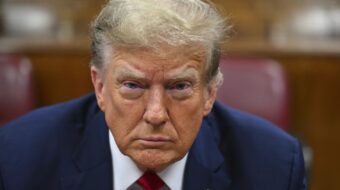








Comments